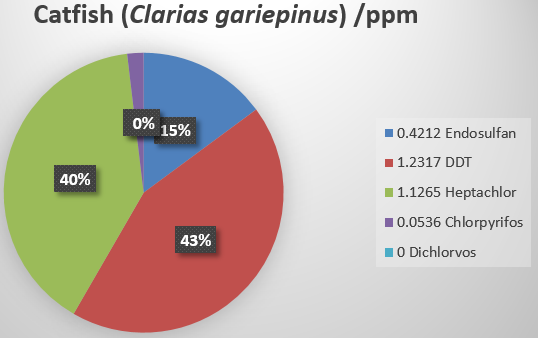A Comparative Analysis on the Use of DDT, Dichlorvos, Endosulfan, Heptachlor and Chlorpyrifos in the Preservation of Smoked-Dried Fish in Ogwashi-Uku, Delta State
DOI:
https://doi.org/10.54117/ijph.v1i2.19Keywords:
Pesticides, catfish, Clarias gariepinus, Ethmalosa fimbriata, health effect, chromatographyAbstract
Naturally, fish is highly perishable, thus its careful handling, prompt preservation and processing are vital factors to consider in order to avoid economic and nutritional losses in fish trade. This study was carried out to ascertain the presence and the quantity of three organochlorine pesticides (Endosulfan, DDT and Heptachlor) and two organophosphate pesticides (Dichorvos and Chlorpyrifos) used in the preservation of two different smoke-dried fish samples namely; Catfish (Clarias gariepinus) and Bonga shad fish (Ethmalosa fimbriata) sold in Ogwashi-Uku market, Aniocha South, Delta State, Nigeria. Gas chromatography (GC – MS) technique was used to determine the pesticide residues in both samples and the results showed positive identification of these pesticides in the samples ranging from 0.4212ppm-0.1760ppm (Endosulfan), 1.2317ppm-0.7270ppm (DDT), 1.1265ppm-0.7019ppm (Heptachlor), 0.0536ppm-0.4274ppm (Chlorpyrifos) with the exception of Dichlorvos which was below determination level (BDL) in the catfish sample but present at 0.0415ppm value in the Bonga shad sample. This study also found that there are possible health implications such as; immune suppression, hormone disruption, diminished intelligence, reproductive abnormalities and cancer in humans.

Downloads
Published
How to Cite
Issue
Section
License
Copyright (c) 2022 Amalachukwu Grace Ofuani , Edward C. Destiny

This work is licensed under a Creative Commons Attribution 4.0 International License.
